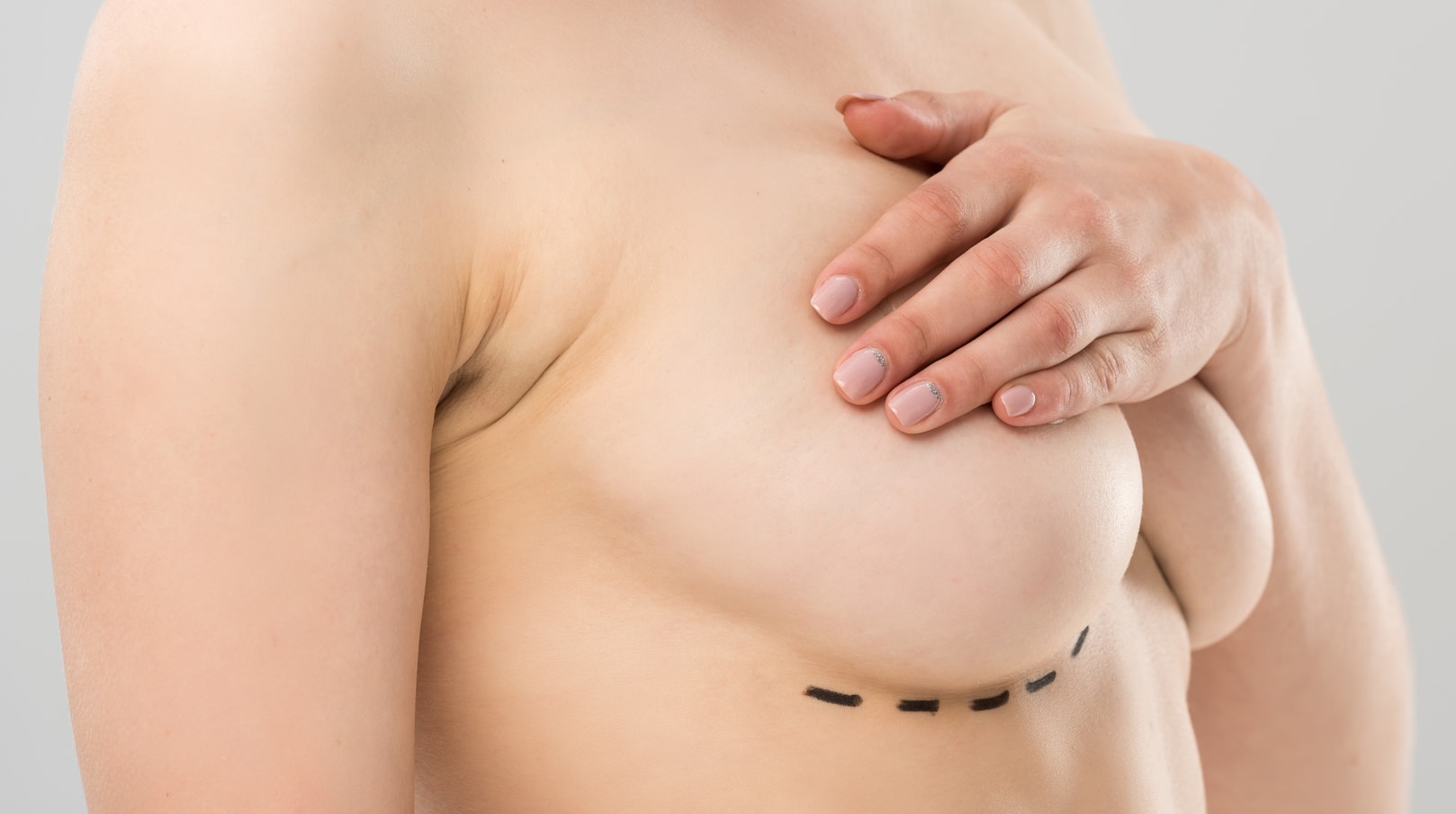
A breast lift, or mastopexy, surgically raises and creates firm breasts by restoring fullness, roundness, natural breast support and the youthful shape that many women want. There are different types of breast lift techniques such as Standard Lift, Donut Mastopexy and Lollipop Lift. The different types of breast lifts all have these items in common:
The main reason for a breast lift is sagging of the breast from weight loss or post-pregnancy changes. Women who feel their breasts sagging want to lift the breast gland higher on the chest or lift the nipples to a higher position on the breast mound or lift both the breast tissue and the nipple. By moving the breast gland and nipples upwards and tightening loose breast skin, a lift effect is produced. The nipple remains attached on the breast gland and does not move. It’s actually the skin around the nipple and areola (pigmented skin around the nipple) that moves.
The scar extending downward from the areola brings the surrounding skin together and tightens the skin envelope while supporting the breast in a higher position and creating a more youthful, robust breast shape with nipple projection. In essence, breast sagging results from a high ratio of skin surface to contained breast volume. By removing skin surface, and tightening the remaining skin around the existing breast gland, the surface to volume ratio is diminished and creates a full, perky breast shape.
In general, GOOD CANDIDATES for the various types of breast lifts include:
Patients who are NOT GOOD CANDIDATES include:
There are several breast lift techniques and they include:
| Standard | Donut Mastopexy | Lollipop Lift | |
| Incisions | Anchor shaped | Round | Lollipop shaped |
| Skin Removal | Around areola and across bottom of breast | Around areola only | Around areola and across bottom of breast |
| Scarring | Anchor shaped | Around areola only | Lollipop shape |
| Appearance | Perkier, maintains nipple projection | Areola lifted, nipple projection may be less | Perkier, maintains nipple projection |
| Best Candidates | Need significant lift, don't mind extra scar at bottom crease | Don't need much lifting, want absolute minimum scarring | Need significant lift, want to minimize scars |
Patients can have breast implants at the same time as a breast lift. Implants add volume to the breast and fullness, especially to the upper breasts. Standard implant choices include round silicone, round saline and shaped “gummy bear” implants. Breast implants are available in many sizes, shapes, and textures including teardrop, round shaped, highly cohesive (more solid) and less cohesive (more liquid). Implants combined with a breast lift are often placed sub-muscular which means deep to the pectoral muscles.
The cost of any type of breast lift depends on a number of factors including fees charged by the doctor, geographic location of the procedure, amount of work performed during the lift, whether or not implants are used, facility fees and anesthesia fees.
A standard breast lift costs around $7000-$13,000, while donut mastopexy is in the range of $4500-$10,000. A lollipop lift can cost anywhere from $5000-$15,000. The final price depends on the amount of tissue removed, the type of lift performed and if the lift is combined with other procedures.
Everyone is different and no one heals at exactly the same rate but there are some RECOVERY and DOWNTIME factors common to all breast lifts.
The various breast lift techniques are designed to provide long lasting, and even permanent, results. However, normal aging can alter the results of any breast lift because gravity and connective tissue changes influence the breasts over time. As women continue to age, they will likely see some descent of the breasts but never to where they were before the breast lift.
Pregnancy and weight gain can also affect the results of any breast lift. If there is weight gain or a pregnancy, the breast will change in size and get bigger. After pregnancy, breasts will get smaller again. Weight gain and loss, as well as pregnancy, can cause sagging breasts. If a patient has a breast lift before pregnancy, and then breastfeeds, there is always a possibility of sagging again. If this does happen, a surgeon can redo the same incision type and redo any type of breast lift that way.
A big LIMITATION for any type of breast lift is the technology that can be used for the breast lift. For example, the sutures doctors use only hold their tensile strength for a certain amount of time. The doctor is relying on the body to cross-link collagen fast enough to hold the results as any internal sutures are absorbed. This is why patients need a good support bra as they are healing because the incision (where the scar will be) is located at the bottom of the breast. All of the weight settles at the bottom of the breast, and rests on the incision, so it can sometimes open up a little bit. Thankfully, the incision is a tiny opening that can be cleaned, bandaged and healed.
The other limitation with breast lifts is the type of lift that can be performed on a patient. The size of the breasts, as well as the amount of sagging, determines the type of breast lift performed on a person.
With any type of breast lift technique, there are RISKS:
Anyone interested in having a breast lift should consult with a board-certified plastic surgeon in order to determine which breast lift procedure will give the desired results. Sometimes, several consultations are needed to gain a better understanding of the available choices and the results that are possible to achieve.
Written by Cosmetic Town Editorial Team - MA
Based on an exclusive interview with Steve Laverson, MD in Encinitas, CA